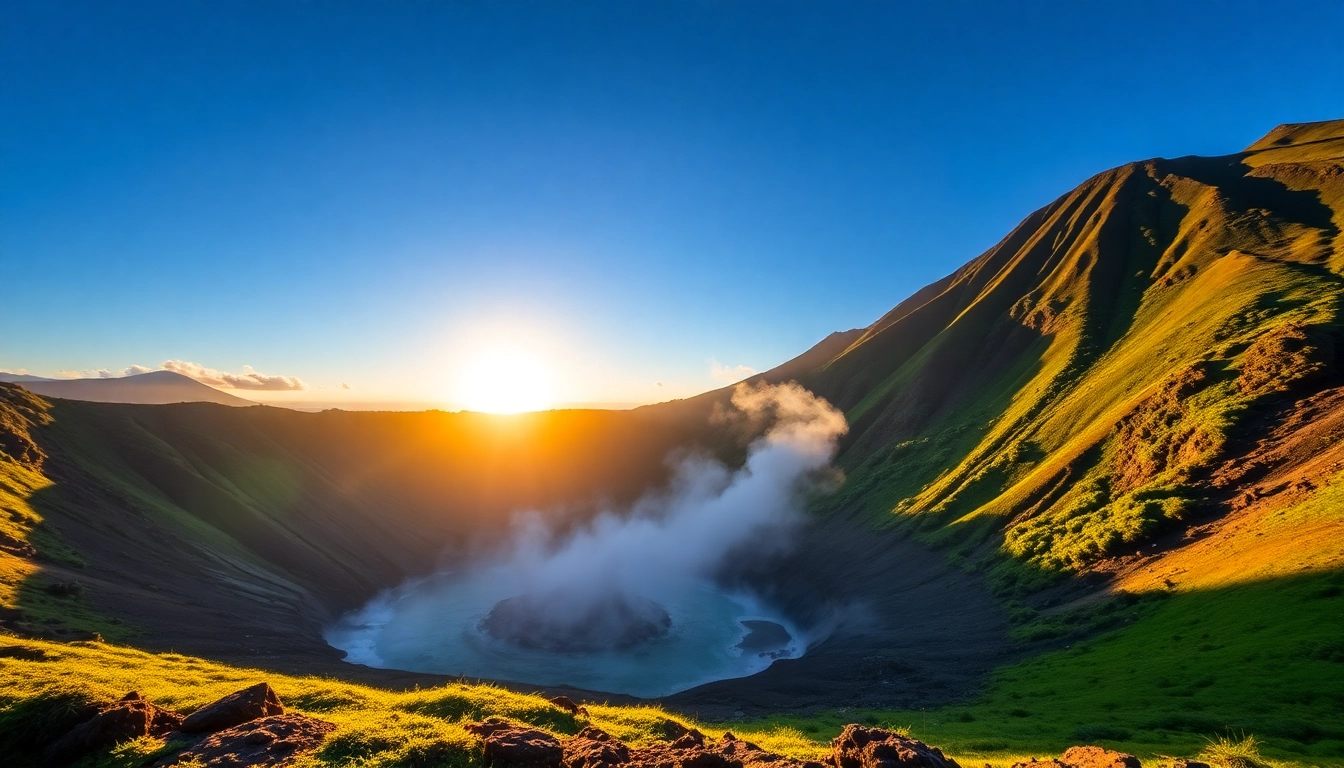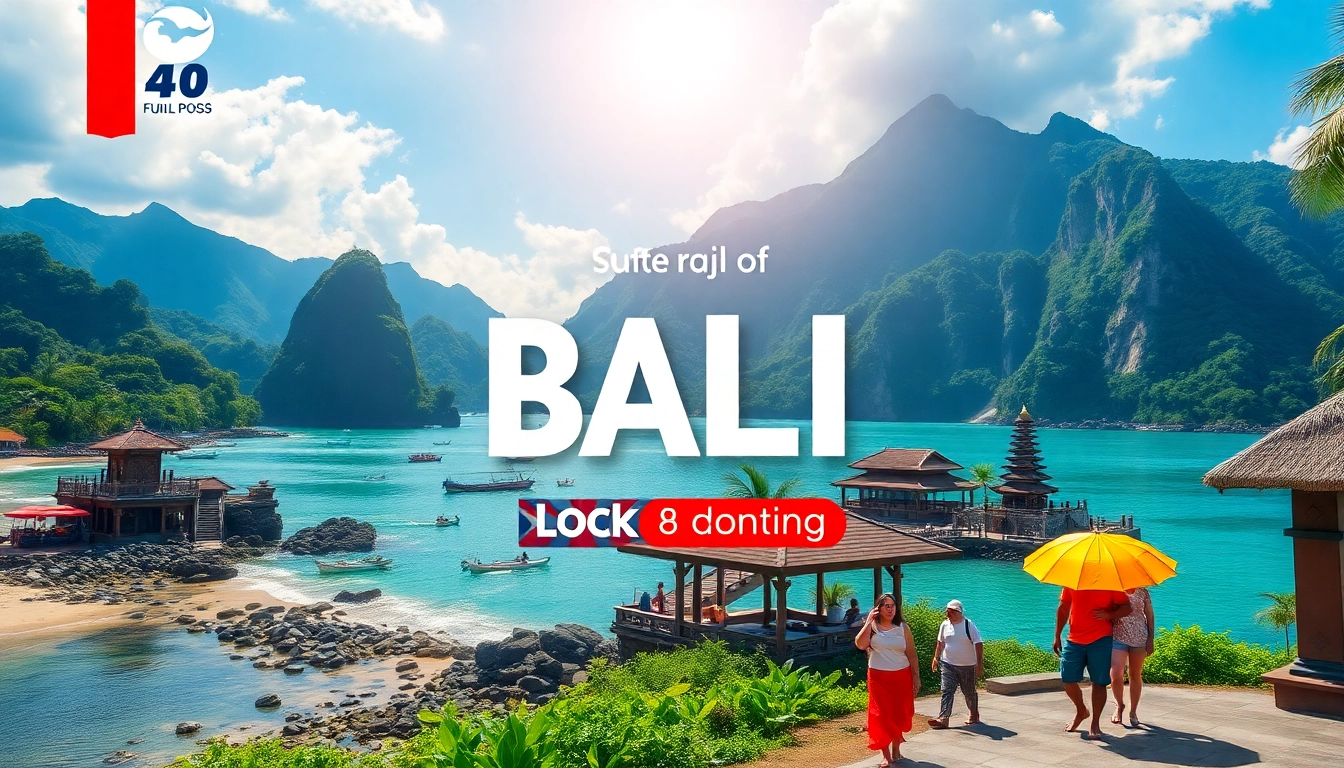Introduction to Mount Rinjani
Perched majestically on the island of Lombok in Indonesia, Mount Rinjani stands as both a natural marvel and a cultural icon. As Indonesia’s second-highest volcano and one of Southeast Asia’s most iconic peaks, Rinjani’s towering presence commands respect and admiration from travelers, scientists, and local communities alike. Its rich history, diverse ecosystems, and challenging treks make it a compelling destination for adventurers and nature lovers alike.
Geographical Location and Significance
Mount Rinjani is located within the Gunung Rinjani National Park in North Lombok, West Nusa Tenggara. With an elevation of approximately 3,726 meters (12,224 feet), it forms a prominent landmark that dominates the island’s landscape. The volcano’s stratovolcano structure includes an active crater, Segara Anak, which houses a stunning crater lake, as well as numerous hot springs and waterfalls. This region is part of the Wallacea transition zone, characterized by a unique blend of Asian and Australasian flora and fauna, contributing to its ecological significance.
Rinjani’s geographical significance extends beyond its physical stature; it serves as a vital water catchment area, supports local agriculture, and sustains a range of biodiversity. Its volcanic activity has historically shaped the landscape, creating fertile soils that sustain local communities and diverse ecosystems.
Historical and Cultural Importance
Rinjani’s history is deeply intertwined with local mythology and regional history. The volcano is considered sacred by the Sasak and Lombok peoples, often featured in myths about creation and spiritual practices. Notably, the eruption of Mount Samalas—an adjacent volcanic complex—around 1257 AD, led to the formation of Segara Anak and caused significant climatic disruptions worldwide, including a temporary climate cooling and crop failures.
The mountain has long been a pilgrimage site, with cultural festivals and rituals performed by local communities to honor its power and seek blessings. Temples, ancestral shrines, and traditional ceremonies continue to reinforce the spiritual connection between Rinjani and the local population, making it a symbol of life, resilience, and reverence for nature’s forces.
Why Mount Rinjani Is a Must-Visit Destination
Visiting Mount Rinjani offers a unique experience that combines breathtaking natural scenery with cultural depth. The challenging trek rewards adventurers with stunning vistas, including the caldera, the lake of Segara Anak, and panoramic views of Lombok’s landscapes. Its diverse ecology, from lush forests to volcanic landscapes, offers a dynamic environment for exploration.
Moreover, Rinjani’s status as a national park ensures the protection of its ecosystems, making it a prime site for eco-tourism and responsible travel. Whether you seek adrenaline-pumping hikes, spiritual encounters, or simply wish to immerse yourself in pristine natural beauty, Rinjani stands out as an unmissable destination.
Climbing Mount Rinjani: Trekking Guide and Tips
Preparing for the Trek: Equipment and Permits
Embarking on a Rinjani trek requires meticulous preparation. Essential gear includes sturdy hiking boots, layered clothing for variable mountain climates, sleeping bags rated for cold weather, headlamps, and a reliable backpack. Due to its active status, trekkers must secure permits from the Rinjani National Park authority before beginning their journey. These permits help regulate the number of visitors, ensure safety, and fund conservation efforts.
Preparation also involves securing appropriate insurance, arranging guides and porters, and familiarizing oneself with park regulations. Having familiarized yourself with emergency procedures and carrying adequate supplies enhances safety and comfort during the ascent.
Popular Routes and Difficulty Levels
Mount Rinjani offers several trekking routes, each with varying difficulty and duration. The most common routes are:
- Sembalun Route: Known for its relatively gentle gradient and scenic landscapes, this route is favored by beginners and takes approximately 2-3 days to reach the summit.
- Torean Route: Slightly more challenging, with steeper sections and dense forests, often combined with the Sembalun route for a multi-day adventure.
- Senaru Route: Starting from the north, this less-traveled path offers secluded wilderness experiences but requires higher physical endurance due to its steep ascent.
The difficulty of the trek varies based on route choice, weather conditions, and individual fitness. Trekkers should assess their experience and physical condition before selecting a route.
Best Seasons and Safety Considerations
The optimal trekking seasons are during the dry months: May to September, when weather conditions are more predictable, and visibility is clearer. During the wet season (October to April), trails can become muddy and slippery, increasing risk of accidents.
Safety factors include altitude sickness, unpredictable weather, volcanic activity, and health issues. Trang steps to mitigate these risks include acclimatization, proper hydration, carrying necessary safety gear, and monitoring volcanic alerts issued by authorities. It is also recommended to hire experienced guides familiar with the terrain and current conditions.
Wildlife and Natural Attractions in Rinjani National Park
Unique Flora and Fauna of the Area
The rich biodiversity within Rinjani National Park comprises over 250 bird species, including the endemic Flores monarch and the black eagle. The park also hosts several mammals such as wild boars, deer, and civets. Its flora ranges from tropical rainforests at lower elevations to alpine grasses and mosses near the summit.
Plant species like the Rinjani pine and various orchids thrive here, providing vital habitat for wildlife and supporting the local ecosystem’s resilience.
Waterfalls, Lakes, and Hot Springs
The park boasts numerous attractions beyond the volcano itself. Notable waterfalls include waterfalls in the Sembalun and Torean areas—ideal for photography and refreshment. Segara Anak Lake, nestled within the crater, presents a surreal landscape with its volcanic origins, and hot springs nearby offer soothing baths after strenuous hikes.
These natural attractions enrich the trekking experience, allowing travelers to connect intimately with Lombok’s volcanic landscape and partake in restorative activities amidst pristine nature.
Conservation Efforts and Responsible Tourism
Maintaining Rinjani’s ecological integrity requires concerted conservation efforts. The national park authorities enforce regulations on waste management, camping practices, and trail sustainability. Visitors are encouraged to practice responsible tourism by minimizing environmental impact, adhering to designated paths, and supporting local communities.
Guest education campaigns and community-based programs foster environmental awareness and promote sustainable livelihoods, ensuring that Rinjani’s natural splendor endures for future generations.
Planning Your Rinjani Adventure
Where to Stay: Lodges and Campsites
Accommodation options range from comfortable lodges and eco-resorts in nearby villages to tented campsites along trekking routes. In Sembalun and Senaru villages, travelers can find lodges offering guided tours, gear rental, and local cuisine, serving as the perfect base for treks.
For overnight stays on the mountain, designated campsites offer a chance to experience dawn and dusk at high altitude, often with basic facilities for sanitation and safety.
Guided Tour Options and Local Guides
Hiring experienced guides is highly recommended for navigation, safety, and enrichment of the trekking experience. Local guides possess valuable knowledge about the park’s history, geology, flora, and fauna, enhancing educational value. Several tour operators provide customized packages, group treks, and logistics support, making planning accessible for all levels of trekkers.
Advance bookings ensure availability and permit compliance, which is mandatory for all visitors.
Tips for a Memorable and Eco-Friendly Trip
- Travel during the dry season for optimal safety and visibility.
- Pack lightweight, durable, and layered clothing suitable for temperature fluctuations.
- Carry sufficient water, high-energy snacks, and a first aid kit.
- Follow Leave No Trace principles by minimizing waste and respecting wildlife.
- Engage with local communities to support sustainable tourism and cultural exchange.
Being well-prepared and environmentally conscious ensures a rewarding experience while preserving Mount Rinjani’s natural wonders.
Visitor Experiences and Practical Info
Reviews and Photos from Recent Hikers
Travel platforms like TripAdvisor and social media showcase a myriad of traveler stories, photos, and testimonials highlighting the breathtaking vistas and personal challenges encountered on Rinjani. Many recent hikers praise the awe-inspiring sunrise views from the summit, the tranquil beauty of Segara Anak Lake, and the camaraderie forged during the trek.
Visual documentation illustrates the volcanic landscape’s stark contrasts—verdant forests, volcanic ash fields, and crater lakes—creating an immersive snapshot of what awaits adventurers.
Common Challenges and How to Overcome Them
Altitude sickness, fatigue, and unpredictable weather are common hurdles. To mitigate these, hikers should acclimate gradually, maintain hydration, pace themselves, and wear layered clothing. Tackling steep sections can be taxing; training beforehand with cardio and strength exercises prepares the body for mountaineering demands.
In emergencies, proximity to park rangers and guides ensures swift response. Always stay informed about volcanic activity and weather warnings to adapt plans accordingly.
Additional Resources and Contact Information
For further trip planning, updates, and permits, contact the Rinjani National Park authority through their official website or authorized tour operators. Guides and local agencies can provide tailored advice, gear rental, and logistical support to ensure a safe and enjoyable trek.
Comprehensive resources, including maps, weather forecasts, and safety advisories, are vital for a successful expedition.





